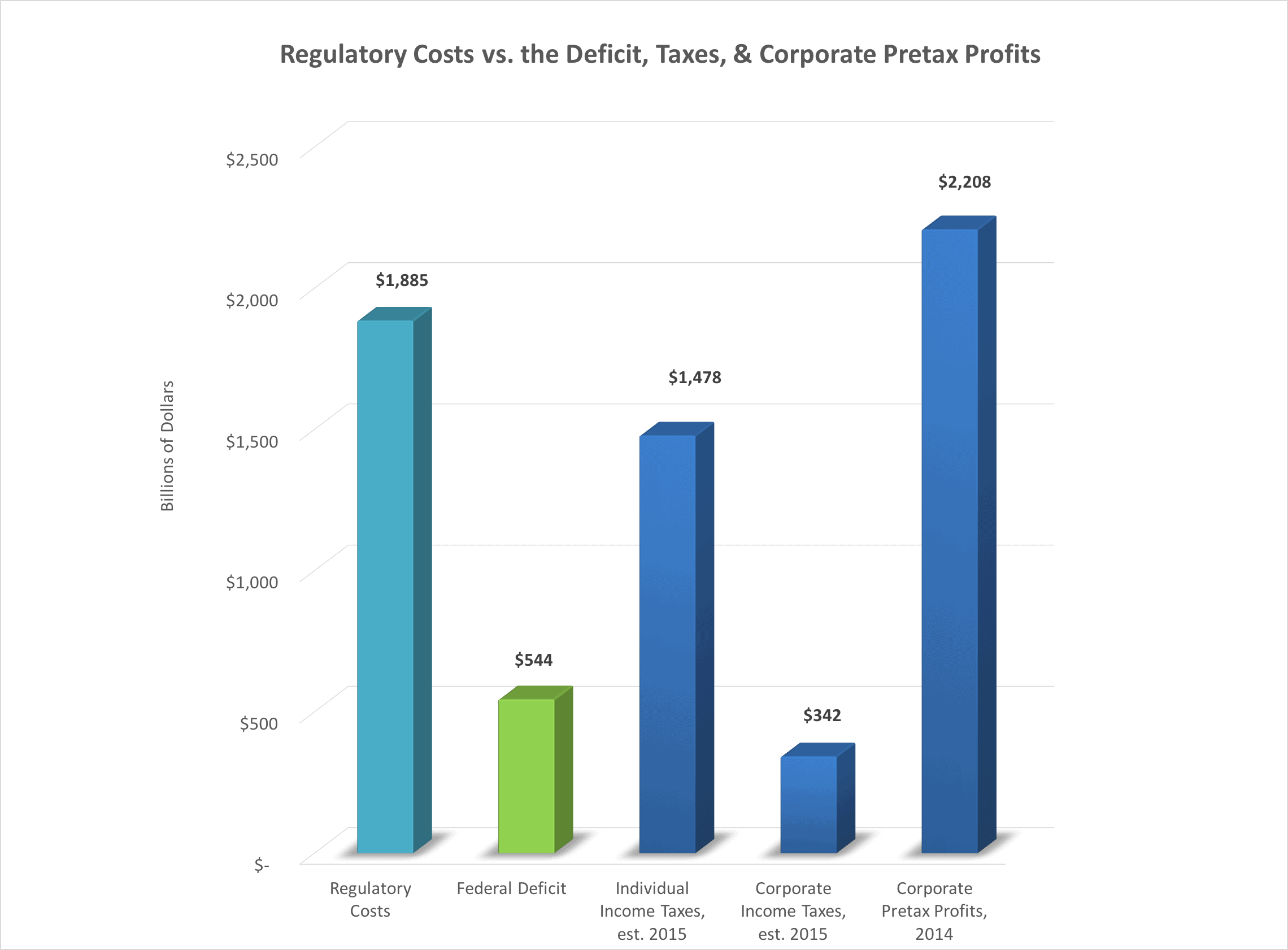Regulatory Cost Blowout: Burden Is Triple the Deficit, Greater than Personal and Corporate Income Taxes Combined

The last time the federal government balanced the budget was between 1998 and 2001. But those were days when a $2 trillion federal budget was regarded as high.
Now it is regulatory costs that approach $2 trillion, while annual federal spending (now $3.7 trillion) will top $4 trillion in short order. I detail this in CEI’s annual report, 10,000 Commandments.
The upshot is off-budget, largely hidden regulatory compliance costs of $1.88 trillion are equivalent to half of all federal outlays. That is sobering enough, but things are more dramatic in Washington’s high-spending culture of perpetual deficits.
Regulations are sometimes like off-budget spending, in the sense that they are costs the population is compelled to bear costs to achieve governmental ends. In the chart nearby, note that estimated regulatory compliance costs are equivalent to well over three times the anticipated 2016 deficit of $544 billion.

No balance—let alone surplus—is projected in the coming decade according to the Congressional Budget Office. In fact, the deficit is projected to top $1 trillion by 2022.
All this spending can translate into even higher future regulatory costs. Spending related to bailouts, stimulus, infrastructure, healthcare, telecommunications and more will inevitably include significant regulatory components as well.
Interestingly, deficits totaling hundreds of billions of dollars and regulatory costs exceeding $1.8 trillion dwarf the initial $150 billion 2008 “stimulus package,” which fizzled and failed to resurrect the economy. Policy makers would do well to employ economic liberalization and limitation of off-budget regulation as ways to address the spending and deficit culture. That will become more urgent as interest rates rise and debt service becomes a crisis.
We can also compare regulatory costs with taxes the federal government collects. Alarmingly, regulatory costs exceed revenue from individual income taxes and corporate taxes combined.
As our chart nearby also shows, regulatory costs now tower over the estimated 2015 individual income tax revenues of $1.478 trillion (individual income tax receipts had fallen substantially during the economic downturn but are rising again). Corporate income taxes collected by the U.S. government, estimated at $341.7 billion in 2015, are dwarfed by regulatory costs (corporate tax receipts had declined by half during the recent downturn). The combination of the two, $1.82 trillion, is just exceeded by our regulatory cost placeholder.
As the last bar of our chart shows, regulatory compliance costs are even approaching the level of pretax corporate profits, which were $2.208 trillion in 2014. That implies that a great deal of economic growth is sacrificed to the regulatory state.
How do regulatory costs relate to the U.S. economy as a whole? The Commerce Department’s Bureau of Economic Analysis in January 2016 estimated GDP for 2015 at $ $17,937.8 billion. The total regulatory cost estimate of $1.88 trillion is equivalent to approximately 11 percent of GDP. Combining regulatory costs with federal FY 2015 outlays of $3.687 indicates that the federal government’s share of the economy now reaches $5.386 trillion, or 31.1 percent. This does not even include state and local spending and regulation.
Clearly, federal and state governments commandeer a vast amount of private resources.